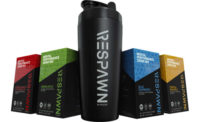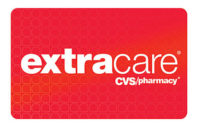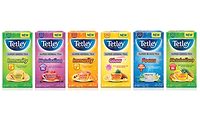Drug stores offer consumers personalized product sets
Channel capitalizes on health, wellness attributes

So far this winter, it’s estimated that between about six to seven million people have been stricken with the flu, according to a January statement from the Atlanta-based Centers for Disease Control and Prevention. As consumers seek out appropriate medical care, many are turning to drug stores to provide them with the necessary prescriptions and products to restore them back to optimal health.
Experts note that one trend in particular is driving the drug store channel’s performance: health and wellness. “Health and wellness items remain a top purchase on drug store trips and some shoppers are utilizing drug stores to manage health care needs,” states Chicago-based Mintel’s February 2018 “Drug Store Retailing – US” report.
“… For some shoppers, drug stores may address many of their healthcare needs and could even be replacing visits to primary care physicians,” the report continues.
Joan Driggs, vice president of Thought Leadership at Chicago-based Information Resources Inc. (IRI) also notes the self-care trend. “People have started to take greater ownership in their personal well-being,” she says. “It has really blossomed from there… Both the drug channel and the retail grocery channel have really upped the services they are offering like more minute clinics and a greater array of diagnostic testing.
“This has extended the way drug stores are making their assortments,” she continues. “They are moving away from things like tobacco, [which is] creating a bigger opportunity for [the beverage industry] to help people manage and maintain their medical conditions or to just help them feel better about their own health and personal well-being.”
Driggs also highlights how personalization has affected the channel. “Retailers want to demonstrate to their shoppers that they are an extension of their support network, like ‘we’ve got you, we’re here to support you, we have the products that you will feel good about purchasing,’” she says.
For example, drug store beverage assortments almost always have a designated health-and-wellness curated-section, Driggs says. “Say it’s cold and flu season… the drug channel is going to do a fantastic job at saying, here is everything you need from beverages—shelf stable, drink mixes, teas — all the way to tissues and other over-the-counter items, that’s that personalization, the ‘we are here for you’ type of feel,” she adds.
Mission-focused products
The drug store category as a whole has experienced marginal growth, with an estimated growth of 2.7 percent in 2018, according to Los Angeles-based IBISWorld’s September 2018 “Pharmacies & Drug Stores in the US” report. This increase marks a total industry revenue of $290.6 billion, it says.
“Over the next five years [2018 to 2023], revenue is anticipated to increase at an annualized rate of 2.4 percent to $326.9 billion,” it adds.
IRI’s Driggs notes that beverage sales account for 5.8 percent of total drug store sales, not including alcohol.
IBISWorld reports that three companies account for more than 65 percent of revenue in the industry: Walgreens (33.7 percent), CVS (28.9 percent) and Rite Aid (5.3 percent). “These three players have dominated the industry for the past decade,” says Chris Lombardo, lead analyst at IBISWorld.
Older demographics generally frequent drug stores more often than younger demographics, Lombardo explains. “This is simply due to the fact that older consumers are more likely to have conditions that require one-time or continual medications,” he says. “As a result, IBISWorld estimates that consumers aged 45 to 64 account for 36.8 percent of industry revenue, while consumers aged 65 and older account for 26 percent of industry revenue.”
IRI’s Driggs echoes similar sentiments on the demographics of consumers who frequently utilize the drug channel. In suburban and rural areas, you are going to find older consumers frequenting the channel, as they are the ones who most likely have prescription ailments that are going to bring them into the store, she says.
However, as consumers venture to more urban areas the foot traffic essentially includes every demographic, she adds.
Although the drug store channel has experienced marginal growth, it faces challenges from other market channels. “Pharmacies and drug stores experience mounting competition from mass merchandisers (e.g., discount stores, supercenters and warehouse clubs) mail-order prescription providers, online pharmacies, convenience stores, wholesalers (e.g., Costco) and health clinics,” IBISWorld’s report states.
“Due to intensifying competition the industry will contend with many external competitors cutting into consumer demand for industry products,” it continues.
As with seemingly most retail channels, eCommerce poses an increasing threat. “eCommerce has affected the industry in terms of pharmaceutical sales,” IBISWorld’s Lombardo says. “Online pharmacies have gained popularity, especially among older consumers who do not want to, or cannot, frequently visit industry establishments. Moreover, these consumers are more likely to have long-term medications that they continually need refilled.
“Using an automatic online pharmacy can prove useful and a bit more convenient for these consumers,” he continues.
Competition and online shopping continue to pose a threat to traditional drug stores, Mintel’s report explains. “Walmart is capturing the most drug store related trips of any retailer, including leading drug stores,” it says. “Additionally, while consumers are shopping both the drug channel and other retailers almost equally overall, online shopping is occurring more outside the channel, signaling an area of concern for traditional drug stores.”
While IRI’s Driggs notes the definite influence of eCommerce on the drug store channel, she suggests the beverage category might not be as strongly impacted. “A lot of eCommerce purchases are more of those uncomfortable/grudge purchases that people are more comfortable making online than physically purchasing at the store… which doesn’t really translate over to beverages,” she says.
“[For example], vitamins are one of the things that you think would be and are a big seller in the drug channel, but they also are one of the top purchased eCommerce items across the board,” she continues.
Despite competition from outside channels, beverage brands and drug stores can explore several opportunities to efficiently utilize the channel, experts note.
“It is all about knowing the drug store’s mission,” Driggs says. “Because they are centered on health and wellness, a manufacturer can go in and say ‘let us be a part of your curated set’ — beauty drinks, drinks for people who have special dietary considerations, people taking medications who need certain supplemental items to help with these issues — really anything that speaks to the collaborative, curated assortments for people who are coming into the store.”
Packaging also has potential to draw consumers to the channel. Because more people are moving away from single-use plastic, brands can seize the opportunity to implement recyclable and reusable packaging, Driggs says. The drug channel can show consumers, “not only do we care about you, but we care about the environment too,’” she adds.
To drive more foot traffic into drug stores, IBISWorld’s Lombardo suggests the channel could choose to focus on its front-end offerings. “Some regional operators have expanded this portion of their business to include more than just the typical food and beverage staples, enabling consumers to do a large portion of their grocery shopping in the establishment,” he explains. BI
Looking for a reprint of this article?
From high-res PDFs to custom plaques, order your copy today!







